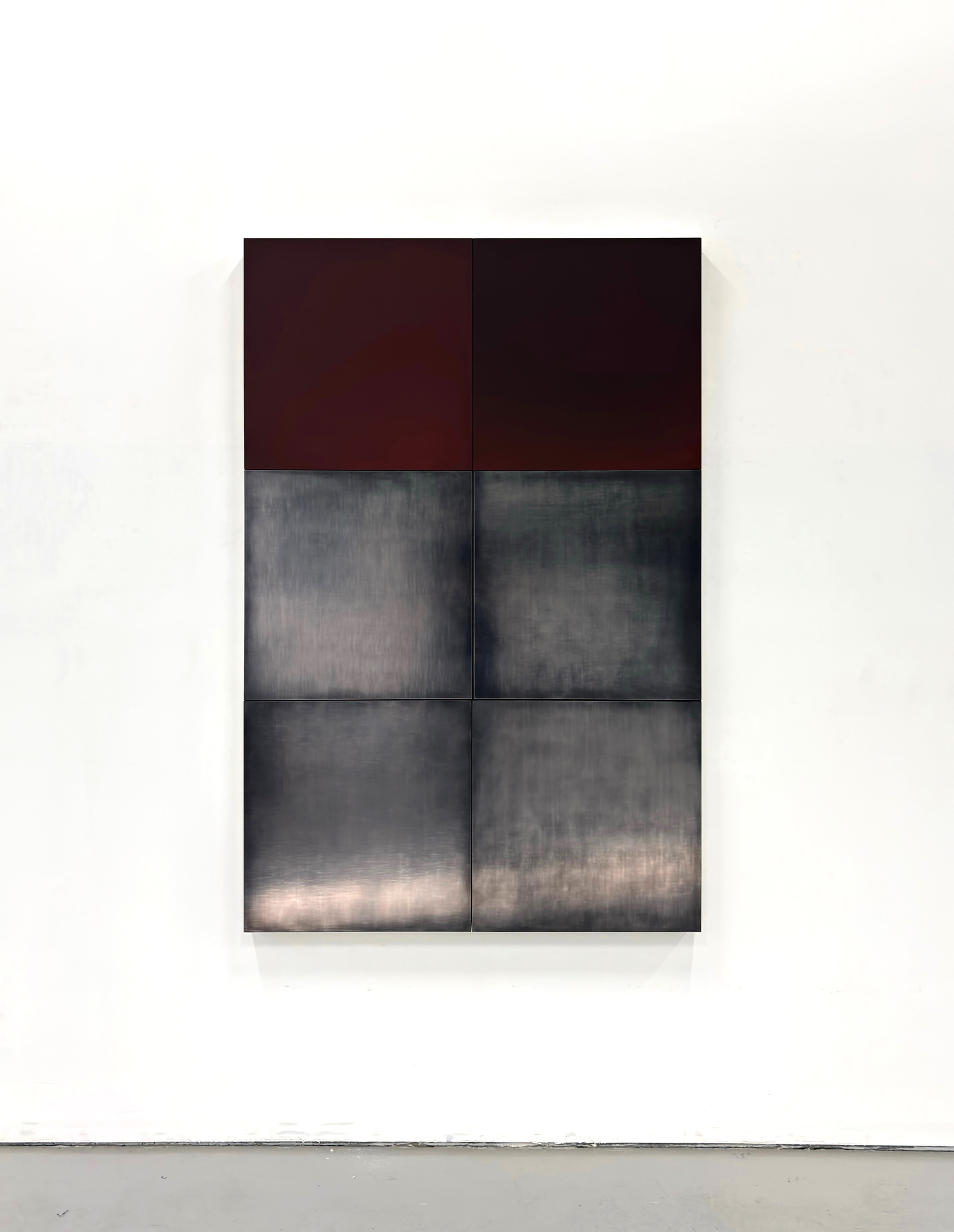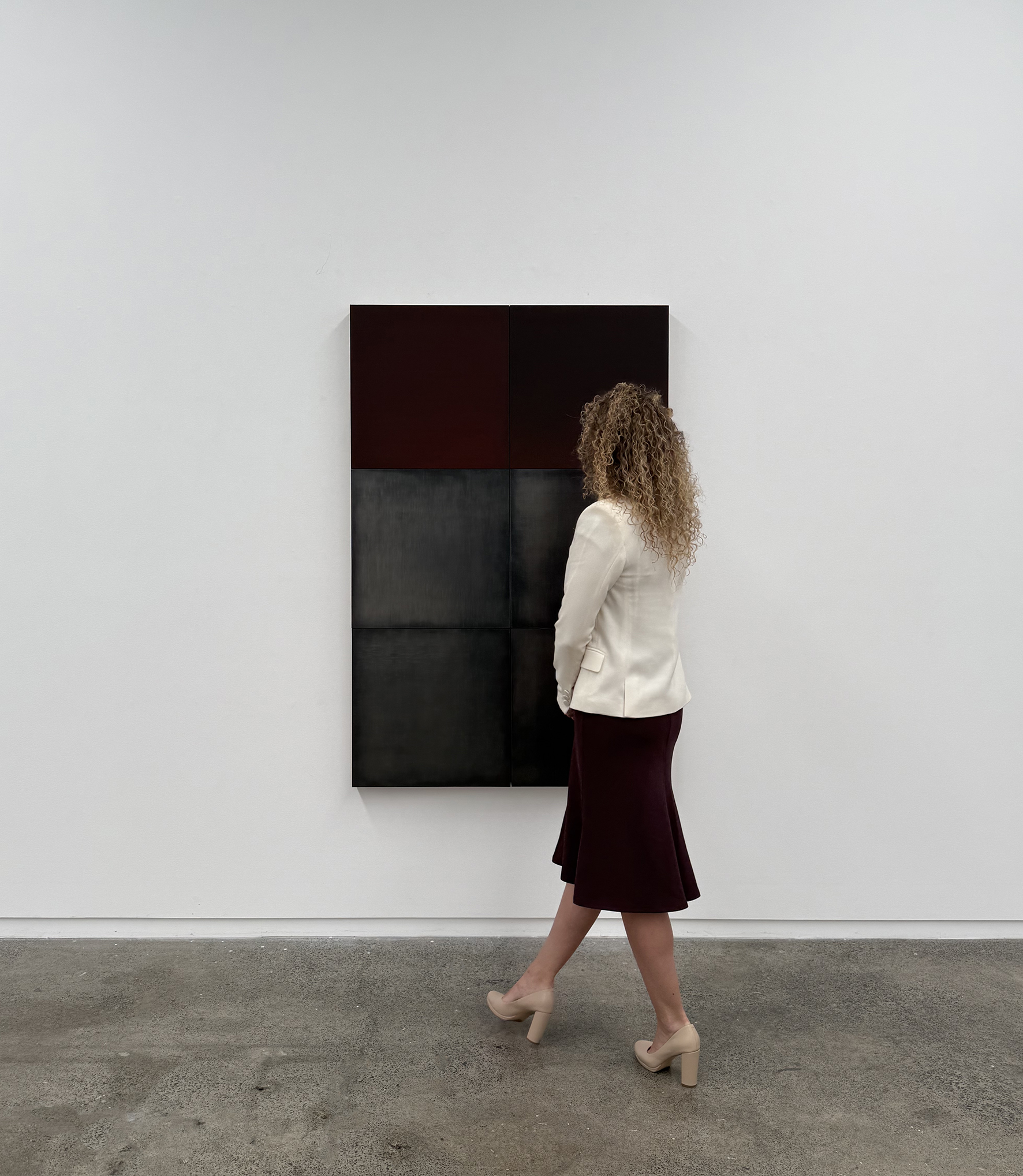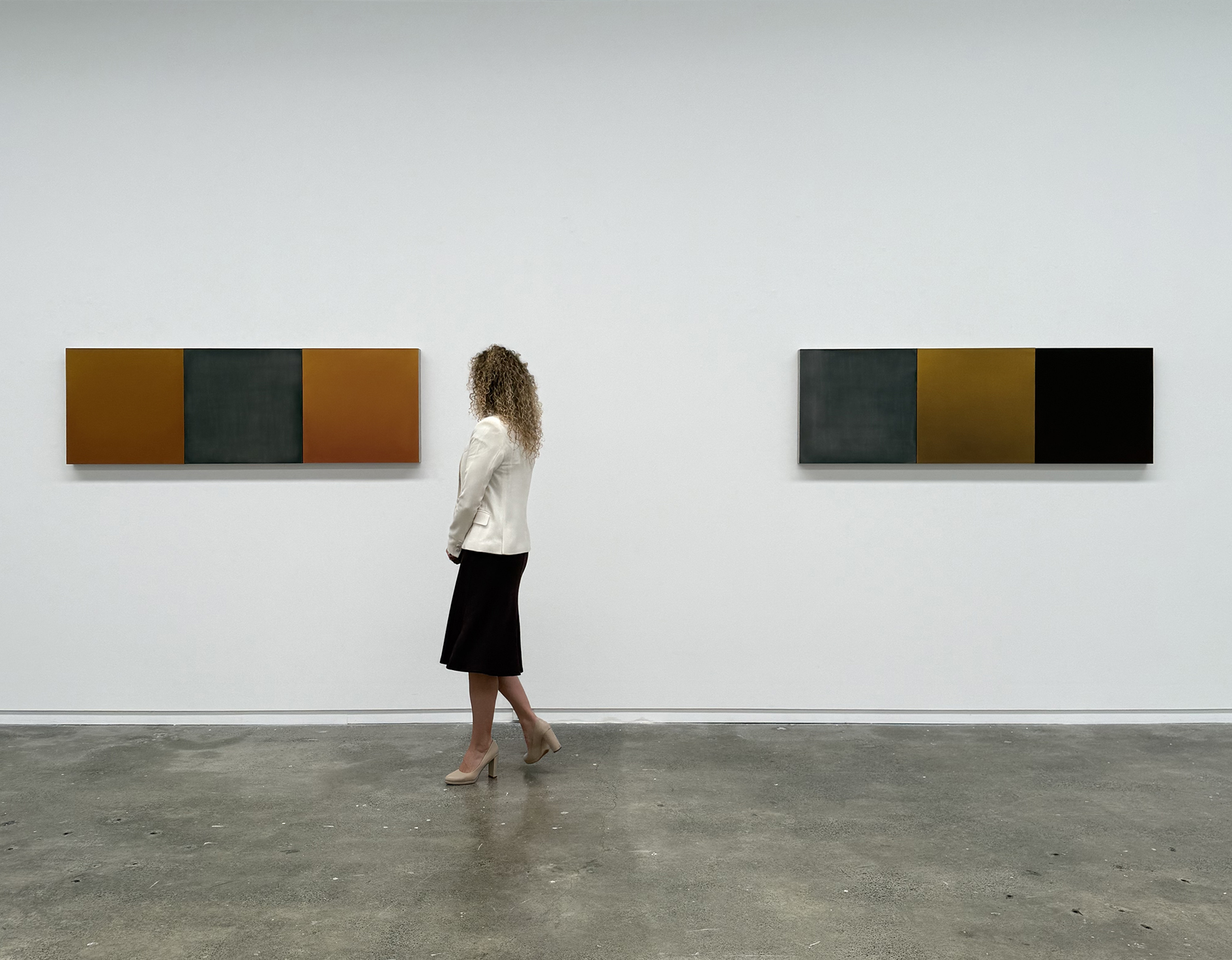MATTHEW ALLEN ROOM TONE
Matthew Allen is a patient painter. Certainly his graphite surfaces can’t be rushed. There is no opportunity for flourish and ornamentation. Even with the addition of the beautifully modulated colour that now join the assembly of graphite panels, so as to build rhythmic sequences of colour and light, one has the sense that his painting practice is an act of sustained meditation.
The allure of graphite very much lies in its capacity to attract light, dance with it and at times swallow it whole, but before it achieves this range and amplitude it has to be coaxed into actuality.
One thinks of the sculpture of Donald Judd and his strong advocacy for the “specific object” where repetition of forms gathers their own concrete reality and don’t aspire to hidden meaning or narrative. But in both Judd and Allen, such a fundamentalist position is not always easy to defend as material, be it aluminium or graphite, it can’t help but consort with light and ensnare the colours of the environment so that the experience of the works is shaped by the space in which it and the viewer participate.
This desire to collapse the distinction between the orthodox illusionary space of painting and the viewer is not uncommon – from Fra Angelico’s monastic cells at San Marco to Rothko’s Houston Chapel. One also thinks of the extraordinary frescoes of David Novros, where the symbiosis between architecture and form, between colour and atmosphere is so collaborative so as to place us inside the painting.
The modest scale of Matthew Allen’s paintings necessarily compresses this ambition, but crucially these are paintings often calibrated to the size of the head rather than the body. Thus, we are invited into close proximity with the works in an exchange that is much more tête-à-tête than Vitruvian.










